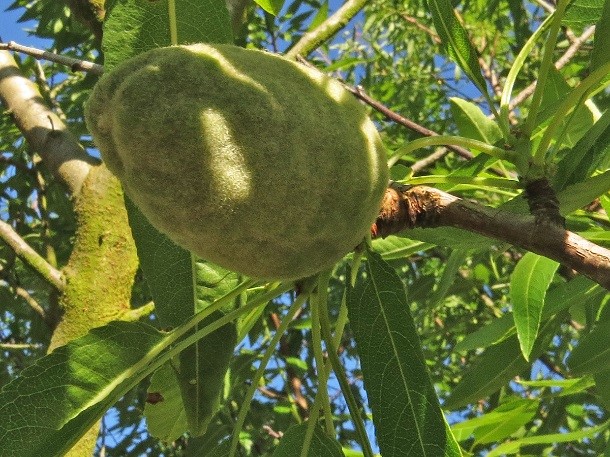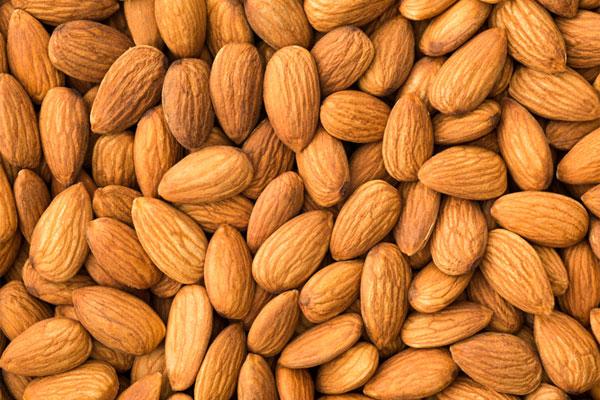growing nuts in the PNW
Hazelnuts (Filberts)
Hazelnuts are the easiest nut to grow throughout the region. Hazelnuts are small, shrubby trees that usually stay under 15′ in height. At least 2 different varieties must be planted for pollination, with a spacing of 15′-20′. Hazelnuts will start bearing nuts 2-3 years after planting. Hazelnuts are fairly soil tolerant. They will grow on heavier soils than most nut trees but are not summer drought tolerant.
Pruning on hazelnuts is relatively simple: 1) remove suckers from the base of the tree annually as a single trunk makes gathering the nuts easier, 2) remove older horizontal or downward pointing wood to renew, 3) thin branches to keep the center of the tree open, and 4) remove any diseased wood. Maintaining an open vase form will keep light and air flowing through the canopy.
Hazelnuts have one main disease issue in our climate: Eastern Filbert Blight. This canker disease is particularly difficult to control on older, blight susceptible varieties. On well-established trees, blight can be pruned out, but it is often better to replace susceptible varieties with newer blight resistant cultivars. Copper sprays can help prevent Eastern Filbert Blight. Even resistant cultivars should be sprayed with copper at bud break when young.
Harvest: When the nut husks turn from green to yellowish and start to drop, the hazelnuts are ripe. Gather the nuts as they drop and remove the husks. If the hazelnuts can turn inside the husks, you can pick them instead of letting them drop. Spread the nuts out in a warm, dry area to cure for a month before eating. Watch for jays or squirrels showing interest in your trees.
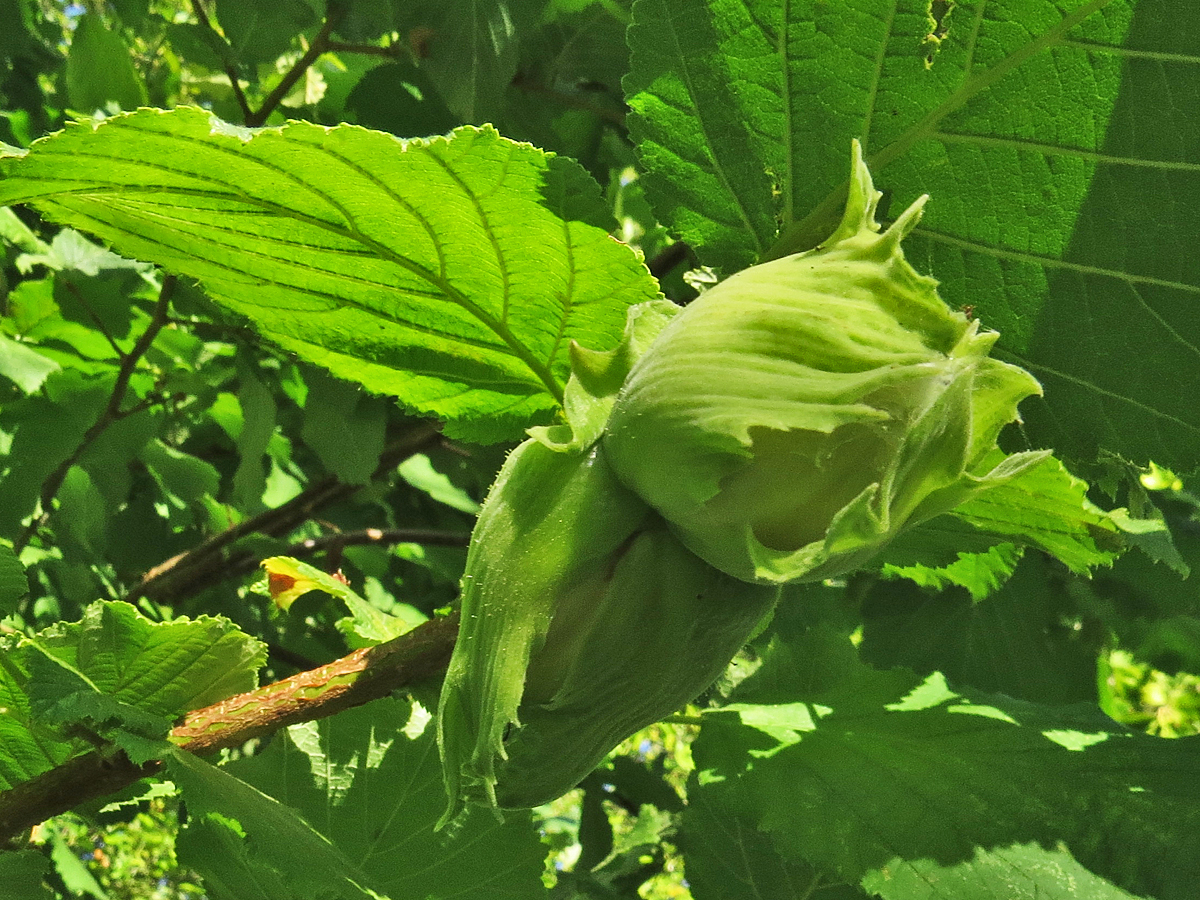
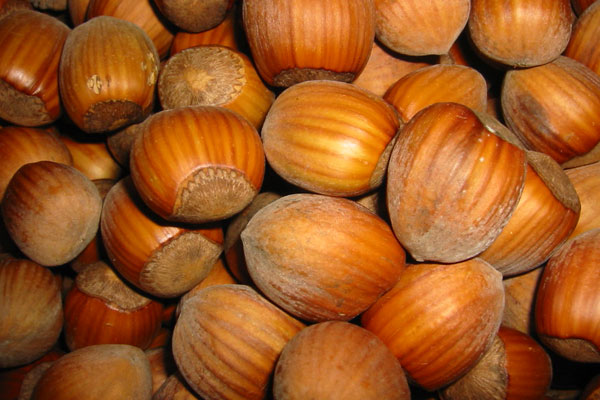
Walnuts
English (or Persian) walnuts are large trees that bear excellent nuts. Growing to 40′ high and 40′ wide, they do require space to thrive. Space 20′ apart at planting. Most are partially self-fertile but set much larger crops and bear earlier if planted with a second cultivar to pollinize. With a pollinizer, you can expect to start seeing nuts at 6-7 years after planting versus 10-15 years without. Walnuts require deep, well-drained soils. They develop a tap root, and do not grow well on shallow or wet soils. Once established, walnuts are fairly drought resistant.
At planting, head (cut back) the tree at about 5′ so branches forming at about 4 ½’. If the tree is shorter than 5’ at planting, do not head it back. As shoots grow the first summer, pinch the tips at 15″-18″. These shoots are then thinned in the following year to form your scaffolds, or main structural branches. In following years, most pruning is done to keep the canopy open and to remove crossing or dead branches. Dormant pruning should be done early to mid-winter, and summer pinching and thinning can be done in mid-summer.
One occasional walnut pest in our area is walnut husk fly. If it becomes a problem, monitoring and targeted spraying is the solution. There is also an occasional disease, walnut blight, that can damage the nuts. It is most common in springs that have rain during bloom. Copper sprays at bud break can control this disease.
Harvest: Nuts drop at ripe stage. The green husk will be split on ripe nuts. Remove the husks (wear gloves!), wash the nuts, and then lay them out on screens or racks to dry in a warm, dry place.
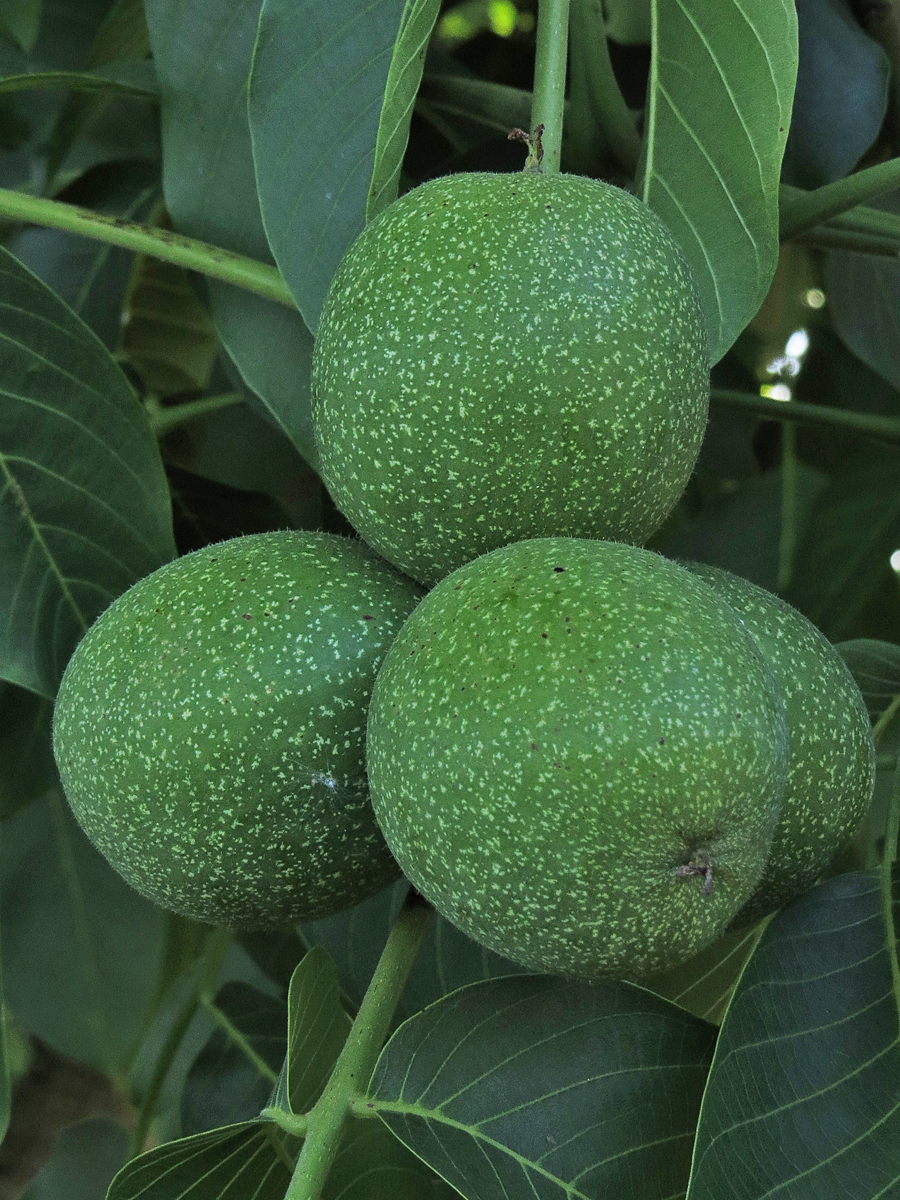
Almonds
For many years, almonds that were hardy enough for our area were peach-almond hybrids. In the last decade, some true almond cultivars from the Nikita Botanical Garden in the Ukraine have been introduced into the Northwest and are proving hardy enough for us. These almonds are late blooming and leaf curl resistant. Like peaches, they do best where there are not frequent late frosts. Partially self-fertile, these produce bigger crops if more than one cultivar is planted. They need well drained soil and are not summer drought tolerant. Expect to start seeing nuts 5-7 years after planting. Almonds will grow to 15′-20′ and should be spaced a minimum of 15′ apart.
Almonds are pruned to an open vase form. Young trees should be thinned to 3 or 4 main branches. In subsequent years, remove crossing branches and keep the center of the tree open to light. Favor branches without narrow crotch angles. After the tree beings to bear, pruning is limited to removing dead, crossing, or diseased wood. Disease management for almonds is much the same as it is for peaches and other stone fruit. Copper sprays applied at flower swell and petal fall can help control brown rot and bacterial issues.
Harvest: Almonds are ready to harvest in late summer when most of the hulls have split. You can shake or knock the nuts out of the tree with a tarp underneath. Remove the hulls and lay the nuts out to dry. The trees may need to be protected from birds as the nuts ripen.
